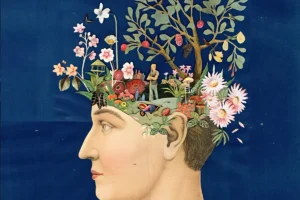Neuroplasticity is a brain process that allows us to change our thoughts, behaviors, and habits for the better, while building resilience and adaptability in ourselves and others.
Younger brains possess greater neuroplasticity, making learning new things easier when young. But plasticity can happen at any age with proper strategies and repetition.
1. Exercise
Exercise is an excellent way to increase neuroplasticity in your brain. By increasing blood flow to areas like prefrontal cortex and motor cortex/striatum, exercise increases activity in these regions allowing easier learning of new information.
Exercise such as brushing your teeth with your non-dominant hand or learning a foreign language to stimulate neural pathways in your brain can also be very helpful in relieving anxiety. These exercises could potentially help alleviate and overcome it altogether.
2. Meditation
Neuroplasticity of our brain is what allows us to learn and recover from injury, while breaking out of neural ruts like negative thought patterns or fear-based responses to life events.
Brain plasticity may be stronger in children and weaker as we get older; nevertheless, its power never ceases. Through practice and conscious effort, however, neuroplasticity can be directed to break unwanted habits and build healthy ones.
Meditation can be an excellent way to do just this; research has demonstrated its ability to alter connectivity patterns within and between multiple brain networks.
3. Yoga
Neuroplasticity refers to all the processes which allow the brain to adapt and change. These may include changes in synaptic strength, neurogenesis and the reconfiguration of functional pathways.
Yoga is an effective way to harness the benefits of neuroplasticity. Through regular practice of meditation, breathing exercises, and posture modification exercises can all help promote brain health; additionally yoga increases oxygen flow to the brain and decreases stress levels.
4. Yoga Nidra
Yoga Nidra is one of the most effective exercises to promote neuroplasticity. This practice involves lying comfortably on your back in a relaxed supine position while setting an intention.
Neurons that fire together form pathways, but if that pathway is used less often it will weaken and eventually disappear altogether.
Thankfully, the brain can adapt at any age; however, older adults may require extra time and effort in creating new pathways to access information.
5. Music
Researchers found that people who regularly play musical instruments like piano, ukulele or harmonica exhibit increased brain plasticity. Even if you’re not an accomplished pianist yourself, now is never too late to start learning!
Neuroplasticity helps us recover from injury and acquire new skills. The process of building and recognising connections occurs throughout our lives and may be stimulated by environment, thinking, behavior and emotions – we truly can teach old dogs new tricks!
6. Reading
Studies show that our brains remain malleable throughout life. Therefore, it’s vital to include neuroplasticity exercises into your daily routine for maximum effect.
If you’re suffering from anxiety or depression, neuroplasticity techniques may be an effective way to rewrite negative thought patterns and reprogram your mind. This may involve memory and recall exercises, breathing practices, changing postural habits and adapting thinking consciously as part of therapy sessions – among many other methods.
7. Learning a new language
Learning a foreign language is one of the best ways to boost neuroplasticity. Studies show that those who learn new languages tend to see dendritic spines form in the hippocampus region responsible for memory and learning, more likely than people not learning any new languages.
Neuroplasticity is particularly crucial for children and young adults as their brains rapidly develop, yet it is possible for adults to promote positive changes to their brains, especially through physical exercise and mental health practices such as juggling or mindfulness.
8. Learning a new skill
No matter if it be language learning or taking up a hobby, learning something helps form and strengthen neuropathways in your brain.
Learning new tasks and engaging in more stimulating mental exercises are also proven ways to combat some of the effects of brain aging. Studies show that using your mind more, particularly through challenging and learning opportunities, can slow the degeneration process significantly.
Rewiring your brain at any age is possible; however, older individuals may find it more challenging. To increase the odds of success and improve outcomes, focus on increasing intensity and finding purposeful goals for change.
9. Learning a new language
Language learning is an excellent way to foster neuroplasticity in your brain, as well as increase cultural appreciation and boost confidence when communicating with others.
Neuroplasticity is most apparent during early adulthood when neural pathways are being formed rapidly. However, anyone can use this process to rewire the brain at any age.



